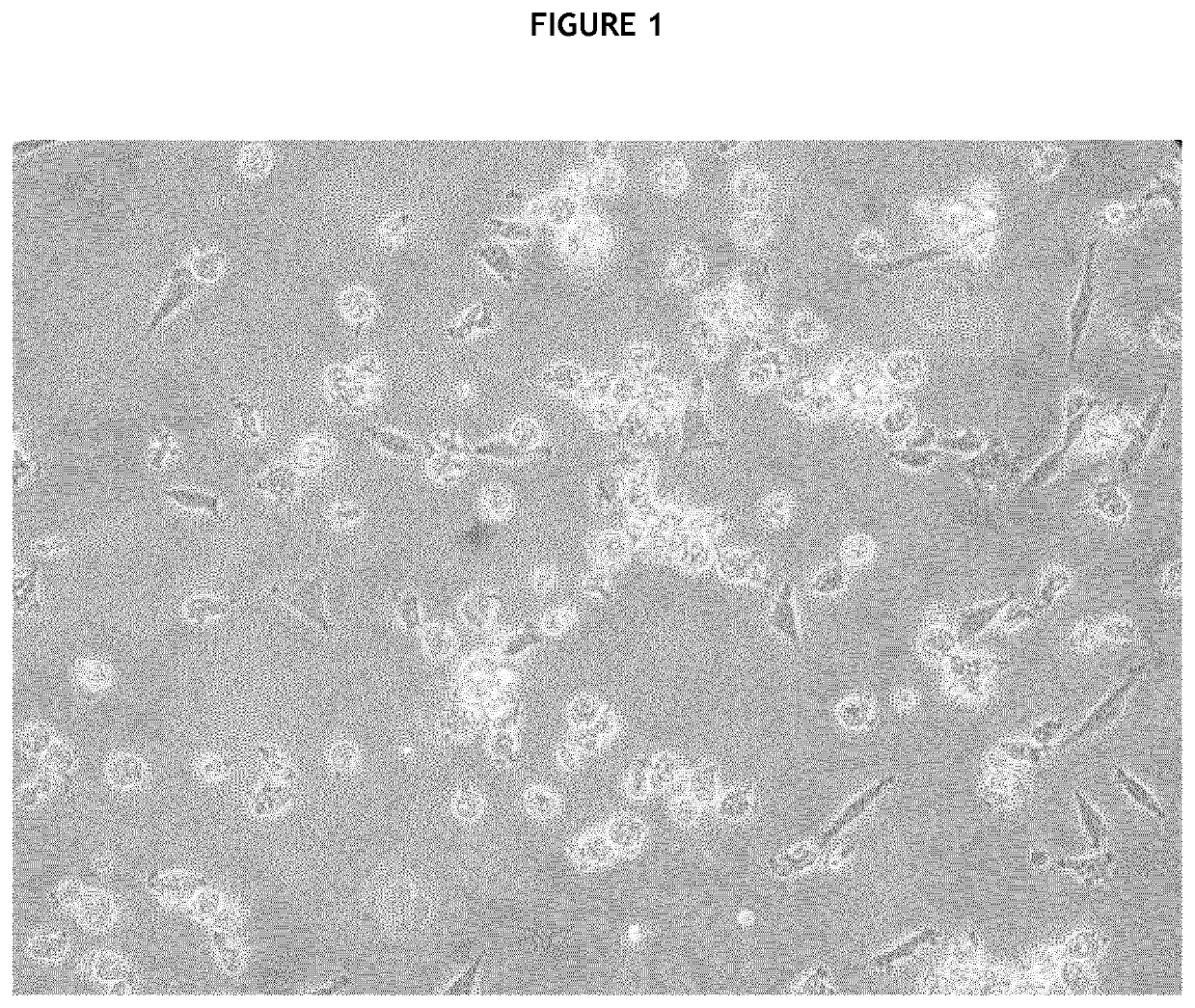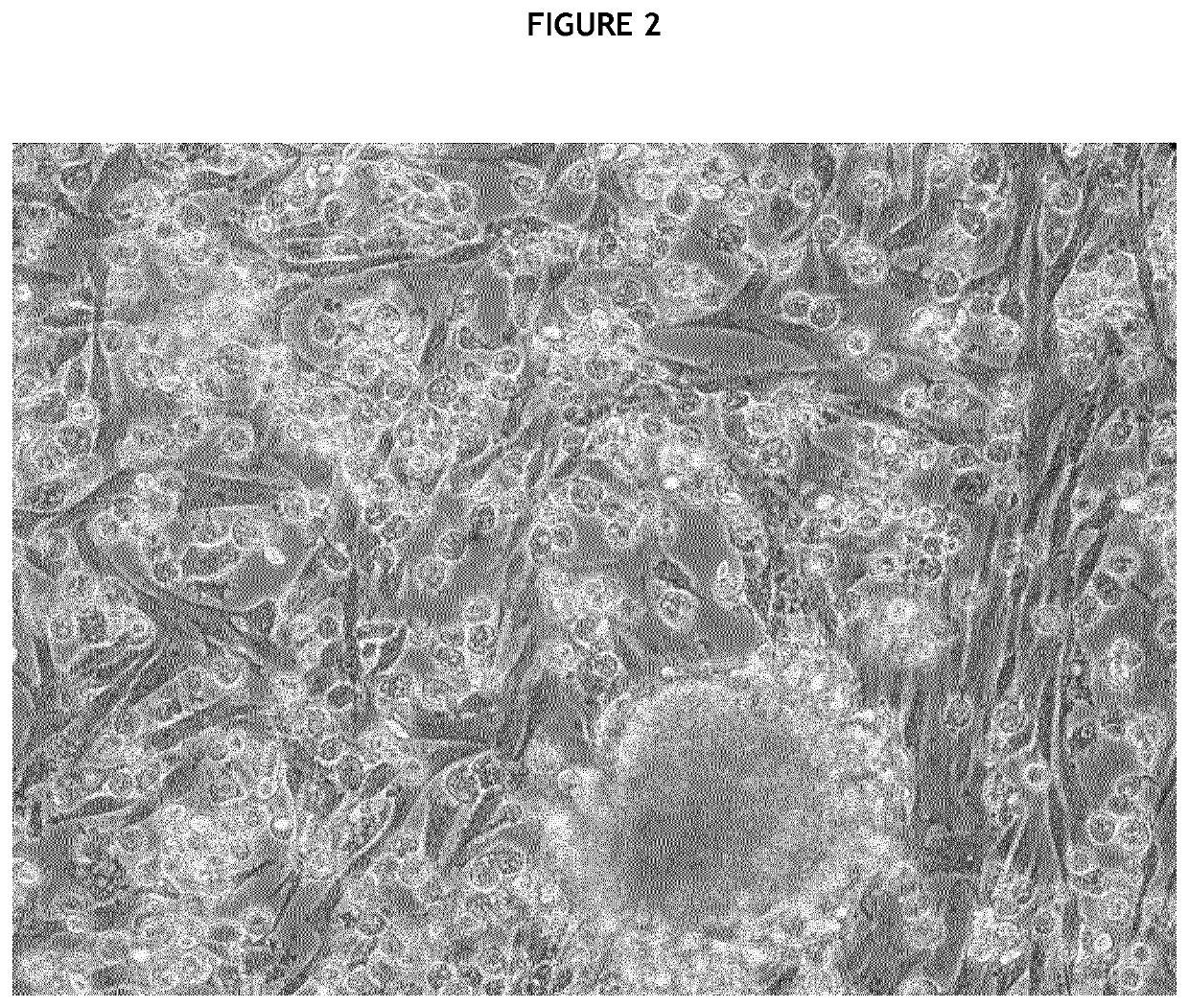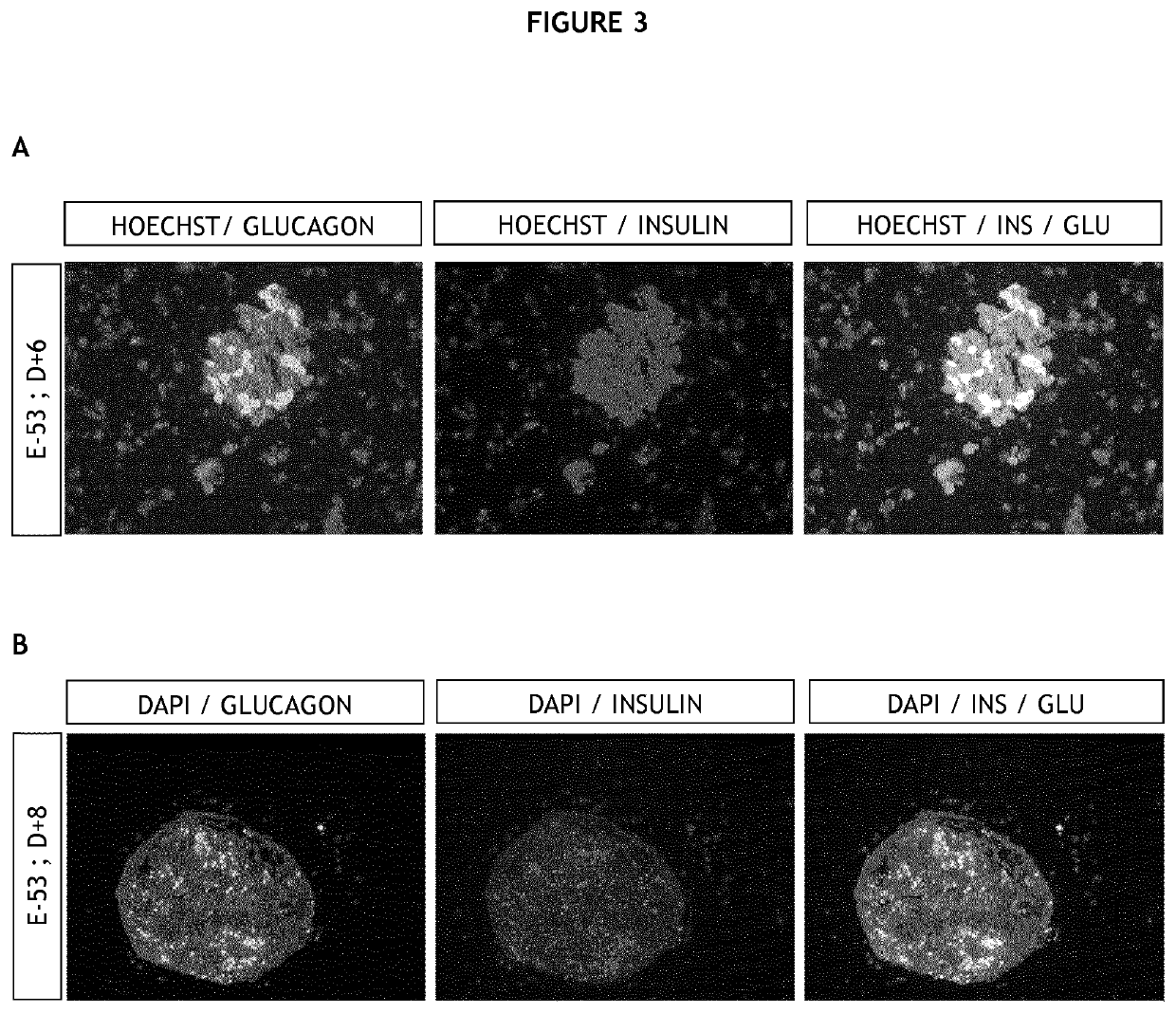Production of canine pancreatic islets from an immature pancreas
a technology of pancreatic islets and canine pancreas, which is applied in the field of canine diabetes, can solve the problems of significant financial burden, substantial deterioration in the quality of life, and stem cell-based therapies that have not been applied to diabetes and other endocrine disorders
- Summary
- Abstract
- Description
- Claims
- Application Information
AI Technical Summary
Benefits of technology
Problems solved by technology
Method used
Image
Examples
Embodiment Construction
A) Material and Methods
[0224]A.1. Materials
[0225]HBSS (Hanks' Balanced Salt Solution) is supplemented with 5.6 mM glucose; 0.2 mg / mL BSA fat acid free and 1% penicillin-streptomycin.
[0226]The culture medium is made with a base of RPMI 1640 medium already containing 11 mM glucose and 25 mM Hepes and supplemented with 10% FCS and 1% penicillin-streptomycin.
[0227]A.2. Source of canine pancreatic tissue and collection procedure
[0228]Pancreases were obtained from Beagle dogs, a strain raised in the housing facilities of Maison-Alfort Veterinary School, at foetal stage 53 days pc (post conception, E-53). All foetal samples were obtained by elective caesarean section. The foetal age was determined according to the ovulation identified by the plasma progesterone surge
[0229]All the procedures involving animals were approved by the Ethic Committee of Maison-Alfort Veterinary School.
[0230]A.3. Generation of the Canine Pancreatic Islets
[0231]Immediately after surgery, all pancreases were dissec...
PUM
 Login to View More
Login to View More Abstract
Description
Claims
Application Information
 Login to View More
Login to View More - R&D
- Intellectual Property
- Life Sciences
- Materials
- Tech Scout
- Unparalleled Data Quality
- Higher Quality Content
- 60% Fewer Hallucinations
Browse by: Latest US Patents, China's latest patents, Technical Efficacy Thesaurus, Application Domain, Technology Topic, Popular Technical Reports.
© 2025 PatSnap. All rights reserved.Legal|Privacy policy|Modern Slavery Act Transparency Statement|Sitemap|About US| Contact US: help@patsnap.com



